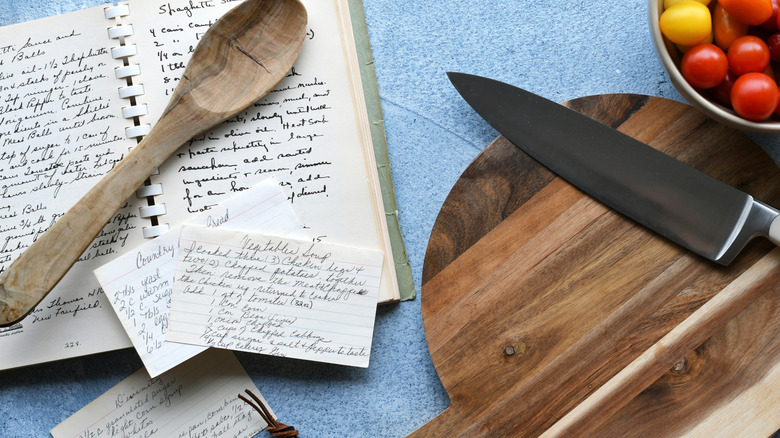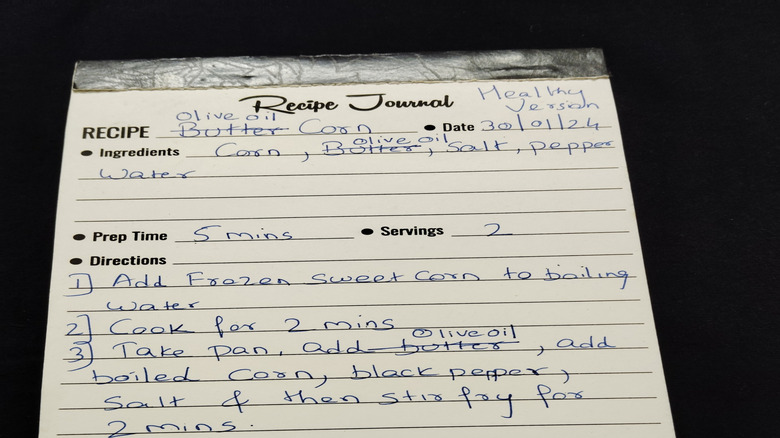Next Time You Use A Recipe, Don't Forget To Do This While You Cook
The second thing my dad taught me about baking was to always take written notes on your recipes. The first was the importance of mise en place, the kitchen prep step that isn't just for professional chefs. When he retired from his profession, my dad went to culinary school. We bake together a lot, and along with the recipe, a pen is a crucial piece of our mise en place. Recipes are yours to engage with, and notating them as you go is a very smart move — especially if you like to play around with the cooking or baking directions. Did you swap, omit, or add any ingredients? Write down any changes so you can replicate the result if it turns out well.
Even more significant than those suggestions are the technical pieces that affect a recipe's success. Because everyone's oven is different, for example, cookies might need to bake for 11 minutes in yours instead of the 13 minutes the recipe claims. Another key item to record is any measurement-related information. What if the recipe calls for one standard packet of instant yeast, but you only have a jar of active dry yeast? (Yes, there's a difference between active dry yeast and instant yeast.) You don't want to have to look up the conversion every time you make the recipe, so write down the necessary information now to save time in the future. You'll know to measure out 2¼ teaspoons, 7 grams, or ¼ ounce of active yeast and anticipate that your dough might take a little longer to rise.
Additional notes to make on your recipes
One of the other 12 recipe reading mistakes that are more common than you think is misunderstanding the terms. To help with that, write explanations for yourself. You can also highlight or underline specific words or instructions, and include other essential details. Does the garlic need to be golden or just fragrant before you add the next ingredient? Yes, the internal temperature of your apple cinnamon babka must be at least 195 degrees, or else it will be a little gummy, so don't be chained to the bake time. And, of course, what ideas you'd like to try next time — just make sure you report on how it turned out (in writing, of course). Maybe you're wondering if you can add chickpeas and turmeric to that vegetable dish. What worked and what didn't this time around? Record everything.
Also note any changes to the recipe yield. Depending on the cookie scoop you use — and whether you add everything but the kitchen sink to the dough — you may end up with 14 medium-sized cookies or 22 small ones. Those are important details to know when planning ahead. Recipes are constantly evolving, and taking notes while making them is just part of the process. How do you think they were developed in the first place? By notating these observations and experiments, you'll become more proficient in the kitchen and hopefully be encouraged to experiment more. Once you start making (and recording) your culinary decisions, the recipes become your own — that's what makes them special.

